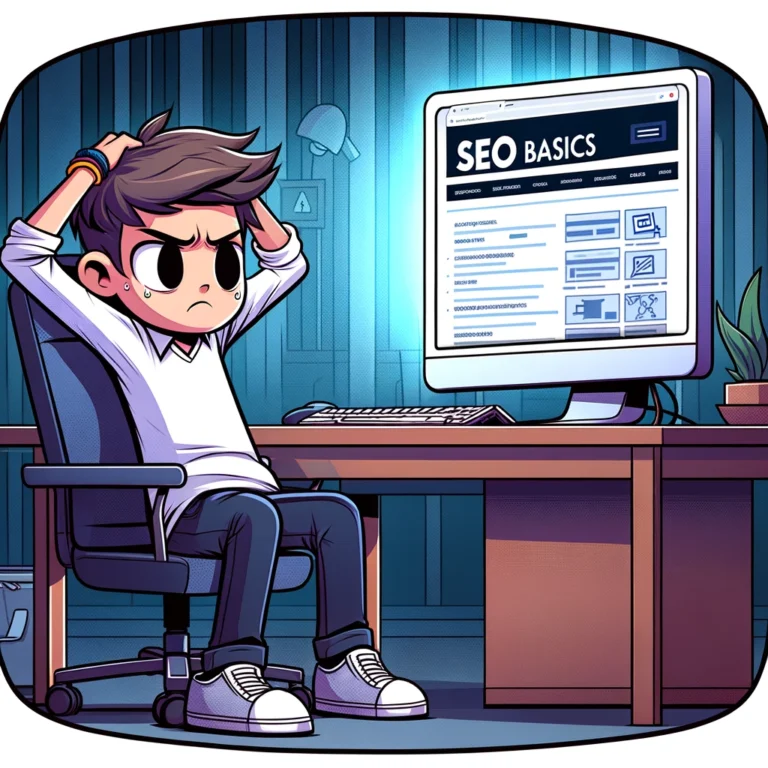In the ever-evolving world of Search Engine Optimization (SEO), the significance of meta descriptions often goes unnoticed amidst more prominent strategies like keyword research and link building. However, understanding and leveraging meta descriptions is crucial for improving your website’s visibility, enhancing user engagement, and driving organic traffic. This article breaks down the basics of meta descriptions, their role in SEO, and how to write them effectively.
What is a Meta Description?
A meta description is a brief summary of a webpage’s content provided in the HTML of a page. Typically, it’s about 155-160 characters long. This snippet appears under the webpage’s title in search engine results pages (SERPs). While it does not directly influence page rankings, a well-crafted meta description can affect the click-through rate (CTR), which is a critical factor in SEO.
Why Are Meta Descriptions Important?
- Enhancing Click-Through Rates (CTR): Meta descriptions serve as an “ad copy” for your webpage. A compelling description can entice users to click on your link, thereby increasing the CTR. Search engines like Google often reward pages with higher CTRs by ranking them more favorably.
- Improving User Experience: By providing a concise summary of the webpage, meta descriptions help users decide whether the content is relevant to their search query. This enhances the overall user experience as searchers can easily find what they’re looking for.
- Supporting Conversion Goals: For pages aimed at conversions, such as product pages or sign-up forms, a persuasive meta description can act as a catalyst for action. It gives users a clear idea of what to expect on the page, which can be decisive in converting them from visitors into customers or subscribers.
- Increasing Web Presence: Even in cases where the meta description doesn’t directly affect rankings, it contributes to your overall web presence. A well-written description can make your site stand out in the SERPs, helping you build brand recognition and credibility.
How to Write Effective Meta Descriptions
Writing an effective meta description requires a balance of creativity and strategic planning. Here are some tips to get you started:
- Keep It Under 160 Characters: Brevity is key. Search engines typically truncate snippets longer than 160 characters, so keeping your description within this limit ensures that the entire message is displayed.
- Incorporate Target Keywords: While meta descriptions don’t directly impact rankings, including target keywords can help reinforce the relevance of your content to both search engines and users.
- Make It Action-Oriented: Use active voice and action verbs to encourage users to take the desired action. Phrases like “Learn more,” “Get started,” or “Try for free” can increase engagement.
- Provide a Clear Value Proposition: Clearly state what the user will gain by visiting the page. Highlight the unique value or benefit your content offers to make your webpage more appealing compared to others in the SERPs.
- Match Content to Expectation: Ensure that your meta description accurately reflects the content of the page. Misleading descriptions can lead to higher bounce rates, which negatively affect your site’s SEO performance.
- Use a Unique Description for Each Page: Avoid using the same meta description for multiple pages. Tailor each description to the specific content of its corresponding page to improve relevance and effectiveness.
Common Mistakes to Avoid
While crafting your meta descriptions, be wary of common pitfalls:
- Overusing Keywords: Keyword stuffing can make your description sound unnatural and spammy, which might deter users from clicking.
- Copying Content from the Page: Although it might be tempting, using copy-paste content as a meta description is a missed opportunity to engage users with fresh, compelling text.
- Being Too Vague: Generic descriptions that could apply to any website offer little value. Be specific about what makes your content unique.
Meta descriptions play a pivotal role in SEO by influencing user behavior and engagement. Although they don’t directly contribute to page rankings, their impact on CTR can indirectly boost your SEO efforts. By crafting descriptive, enticing, and clear meta descriptions, you can enhance user experience, increase traffic, and achieve better conversion rates. In the landscape of SEO, never underestimate the power of a well-formulated meta description.

Meta descriptions, despite being brief, wield considerable influence over the success of your SEO efforts. Their importance cannot be overstated, and as we continue exploring this topic, we’ll delve deeper into strategic implementations and advanced tips for optimizing your meta descriptions to achieve the best possible outcomes.
Advanced Tips for Crafting Superior Meta Descriptions
Building on the basic principles of meta description optimization, here are some advanced strategies to further enhance their effectiveness:
- Leverage Emotional Appeal: Emotions can drive actions. Using emotional triggers in your meta descriptions can make them more compelling and memorable. Words that evoke curiosity, excitement, or urgency can significantly increase click-through rates.
- Use Numbers and Statistics: Numbers stand out in text and draw attention. Including statistics or numbers in your meta descriptions (e.g., “Join over 10,000 happy customers”) can increase credibility and attract more clicks.
- Incorporate Social Proof: Mentioning awards, recognitions, or user endorsements in your meta descriptions can boost trust and interest. Phrases like “Award-winning” or “As featured in” provide validation and can influence decision-making.
- Optimize for Voice Search: With the rise of voice search, optimizing your meta descriptions for conversational queries is increasingly important. Include natural, spoken language that answers common questions directly related to the search query.
- Test and Refine: SEO is not a set-it-and-forget-it endeavor. Regularly testing different versions of your meta descriptions can provide insights into what works best for your audience. Utilizing A/B testing tools can help you refine your approach based on real data.
- Seasonal Adjustments: Update your meta descriptions to reflect seasonal campaigns or events. This keeps your content timely and relevant, potentially boosting engagement during key periods.
The Impact of Meta Descriptions on SEO and User Behavior
The influence of meta descriptions extends beyond mere clicks. They play a crucial role in shaping user expectations and experiences. Here’s how:
- First Impressions Count: For many users, the meta description is the first point of contact with your content. A strong first impression can enhance brand perception and user retention.
- Bounce Rate and User Engagement: Accurate and enticing meta descriptions can lower bounce rates by ensuring that visitors know what to expect before they click through to your site. Once on the site, they are more likely to engage with the content, enhancing metrics like time on page and interactions per visit.
- SEO and Beyond: While meta descriptions themselves do not influence rankings directly, their effect on user behavior can indirectly impact SEO. Search engines use user engagement signals as a factor in ranking decisions, making effective meta descriptions a valuable asset.
Integrating Meta Descriptions into Your Overall SEO Strategy
To maximize the effectiveness of your meta descriptions as part of a broader SEO strategy, consider the following integration tips:
- Alignment with Overall Content Strategy: Ensure your meta descriptions align with your content’s key themes and marketing goals. Consistency between your meta description, content, and keywords strengthens your message and SEO performance.
- Collaboration with Other SEO Elements: Meta descriptions should work in concert with other SEO elements like title tags, header tags, and internal linking. This cohesive approach ensures a unified strategy that optimizes all facets of your webpage for search engines and users.
- Monitoring and Adjustments: Regularly monitor the performance of your meta descriptions in terms of click-through rates and other engagement metrics. Adjust as necessary to respond to changes in search engine algorithms or shifts in user behavior.
Conclusion
Mastering the art of writing effective meta descriptions is essential for anyone serious about SEO. These small snippets can have a large impact on your site’s visibility and success. By understanding their role, employing strategic writing practices, and continuously refining your approach based on performance data, you can turn meta descriptions into a powerful tool in your SEO arsenal.
In the competitive realm of digital marketing, never underestimate the power of a well-crafted meta description to differentiate your content in the crowded online space and drive meaningful engagement and conversions.



